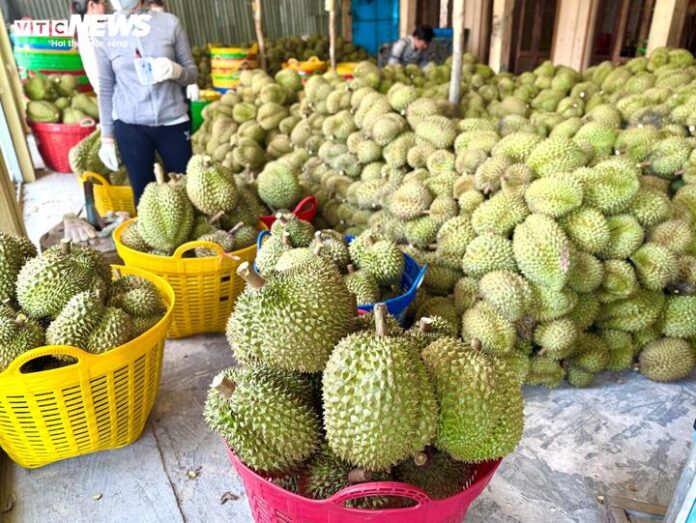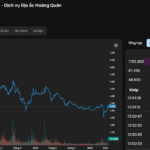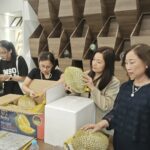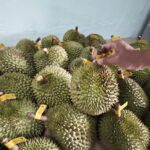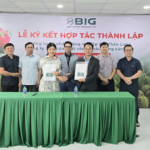These days, it’s not unusual to come across durian wholesale markets or collection points operating day and night along National Highway 1 in Cai Lay district, Tien Giang province. Durian fruits are piled high, with workers busy sorting and weighing them.
In one corner of the wholesale market, before being packaged and sent off for consumption, each durian is dipped into a pale yellow solution…
Durian “Dipped in Solution”
Posing as passing customers, we stopped at a durian collection point in Tam Binh commune, Cai Lay district. This place belongs to a trader with over 20 years of experience in the durian business and has been a collection point for this “king of fruits” for many years.
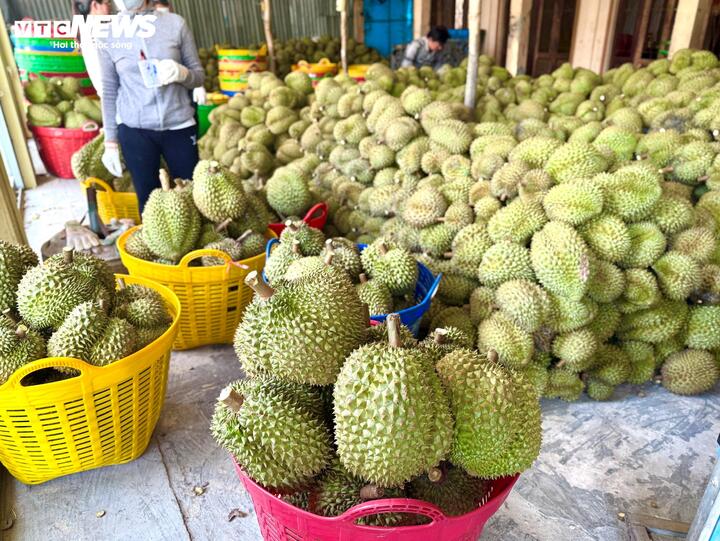
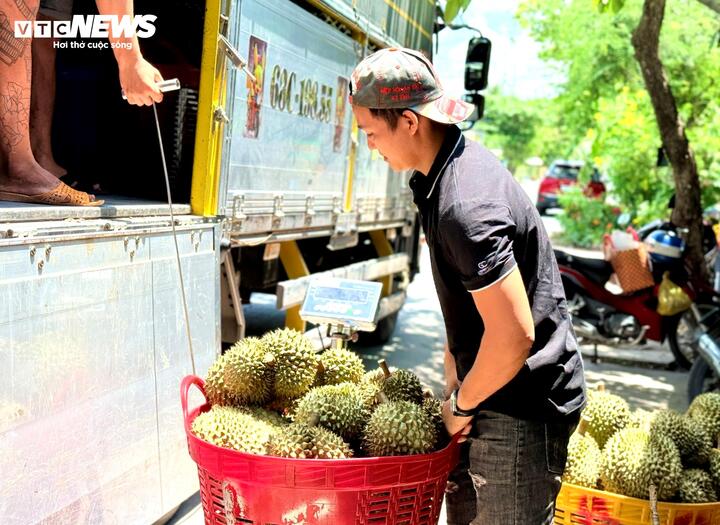
Durian prices in Tien Giang are at an all-time low, dropping by 60% compared to last year, despite being in the peak season.
Upon seeing us, the workers warmly engaged in conversation, exuding the sincere and approachable nature of the Mekong Delta farmers.
“You’re customers from far away, right? If you want to try some, we can find you a ripe one. But if you want to buy more to take home, I’ll have to get the boss. He sells to passersby like yourselves at 45,000 VND per kg, which is the same price as buying directly from the farm. This price is less than half of what it was last year,” shared an honest worker.
After learning that we wanted to eat on the spot, this person immediately rallied the team: “Let me find one that was dipped yesterday so you can eat it right now!”.
“Dipped?!” – This word startled us a little.
“What do you mean by dipped?”, we asked. “Dipped in solution!” , the worker casually replied.
At this point, we revealed ourselves as journalists investigating the truth about durians “dipped in solution”. Although a little surprised, the worker did not hesitate to find the “boss” to meet us.
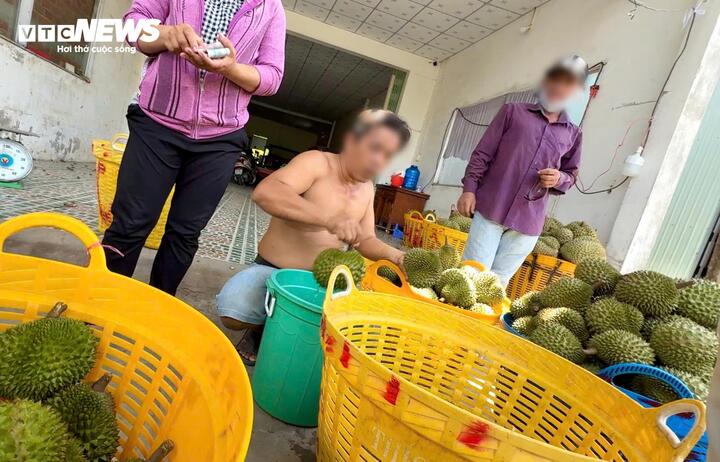
Treating durians with solution is a common post-harvest technique.
“We only dip them to ensure even ripening. This solution is approved for use. I’ve also seen a lot of exaggerated claims online, such as dipping in toxic chemicals or that eating dipped durians can cause cancer… But we don’t know how to respond to these accusations,” shared Mr. T., the trader and owner of the collection point.
He then led us to the area where the durians were being… “dipped in solution”: “Feel free to film and take photos. Just make sure to report the truth.”
Here, two solutions were used by the workers, namely Kina Ado Ethephon and HTC Dai Ngan. The workers shared that they have been using these solutions as a “dipping solution” for many years. Not only are these solutions used for durians sold in the market, but they are also used by the workers’ families when they want to enjoy perfectly ripe durians.
Leaving Tam Binh commune, we headed to Ngu Hiep commune and visited a durian wholesale market specializing in exports to the Chinese market.
The same two solutions were used at this wholesale market. However, perhaps due to feedback, the owner of this wholesale market referred to the process as… “treatment”.
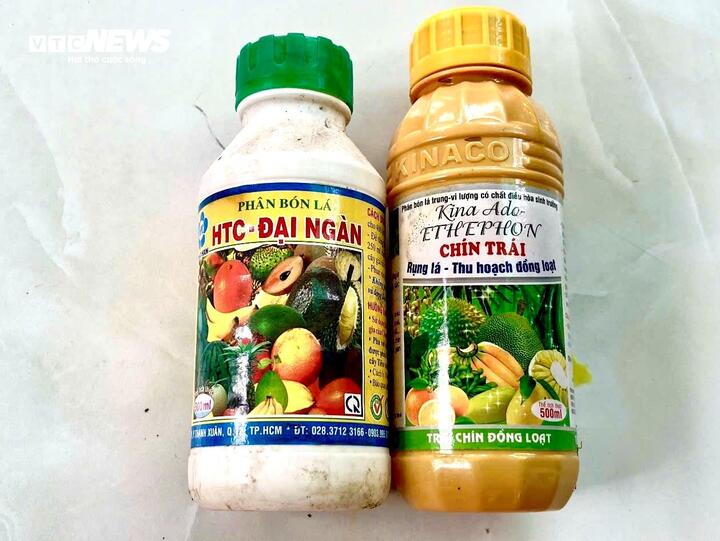
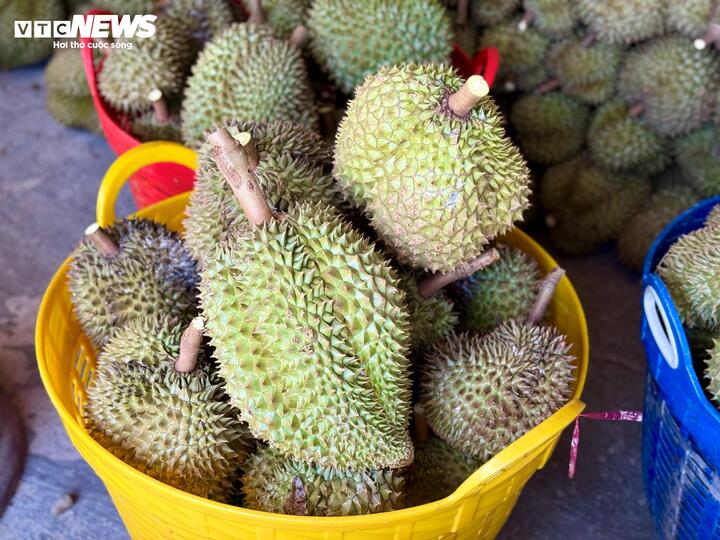
The solutions used to ripen the durians are named Kina Ado Ethephon and HTC Dai Ngan.
“Before, we also called it dipping in solution because the bottles look like medicine bottles. We didn’t pay much attention to it and just called it that. But recently, there have been a lot of rumors claiming that we’re dipping the durians in toxic chemicals. Someone suggested that we change the term to ‘treatment’, so now I’m trying to get used to calling it that,” shared Mr. H., the owner of the wholesale market.
It’s not just these two places; in reality, many households in Cai Lay are willing to show visitors where they mix the solution and treat the durians according to the proper procedure. Without any hesitation, they even invite people to film and take photos, exuding confidence in their practices.
To prove his point, a farmer in Ngu Hiep commune led us to the back of his house and showed us a bucket of durians that were still wet from the solution: “These are for my daughter, who works in Ho Chi Minh City. She and her sister love durians.”
According to this farmer, durians will ripen without the solution, but achieving even ripening is challenging: “Without the solution, some segments of the fruit will ripen earlier or later, resulting in inconsistent texture.”
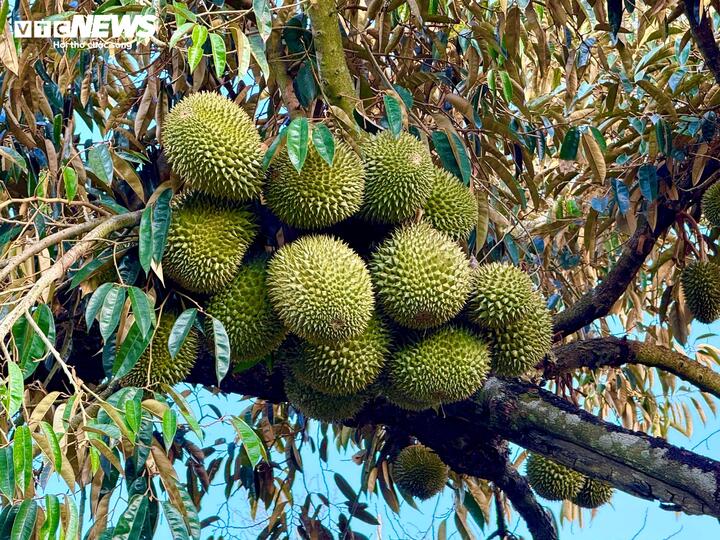
The term “dipped in solution” has unfairly tarnished the reputation of durian growers for years.
Thus, the term “dipped in solution” unintentionally became a reason for a series of misunderstandings. Public opinion, especially on social media, quickly associated this practice with “soaking in harmful chemicals”. A common post-harvest technique was suddenly perceived as a way for farmers to poison consumers.
Clearing the Air
To understand the nature of the “dipping solution”, we sought the expertise of Dr. Nguyen Dang Nghia, an agricultural expert and former director of the Southern Agricultural Science Institute. Dr. Nghia has extensively researched Ethephon, the main active ingredient in some fruit-ripening solutions currently on the market.
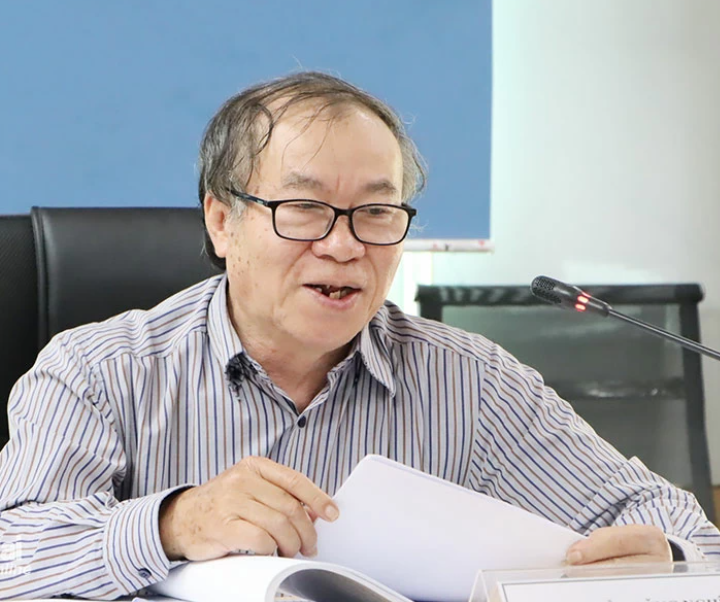
ts-nguyen-dang-nghia.pngDr. Nguyen Dang Nghia
He affirmed that both Kina Ado Ethephon and HTC Dai Ngan are formulations approved by the Ministry of Agriculture and Rural Development. They serve the purpose of promoting even fruit ripening. These are two ripening agents recognized and widely used worldwide.
“If it’s approved by the government, how can it be toxic? Ethephon is a compound that, upon degradation, releases ethylene gas – a natural gas produced by plants during the fruit ripening process. Ethylene helps soften the fruit’s tissue, change the peel color, and develop the flavor, all of which correspond to the natural ripening process.
I want to emphasize once again that these solutions are safe and approved for use. However, I must also remind you that these solutions should be used separately and must not be mixed with any fungicides.
Going forward, I believe the authorities should analyze the specific components of these solutions to provide consumers with more transparency and peace of mind,” shared Dr. Nguyen Dang Nghia.
According to him, Ethephon has been used for decades, not only in Vietnam but also in major exporting countries like the Philippines and Thailand.
However, he also noted that these solutions are not fertilizers, despite the label stating “leaf fertilizer”. He explained that this is due to the approval process in Vietnam, which requires the approval of the Fertilizer Council. While the primary function of these solutions is to induce ripening, the labeling had to follow the approval procedure.
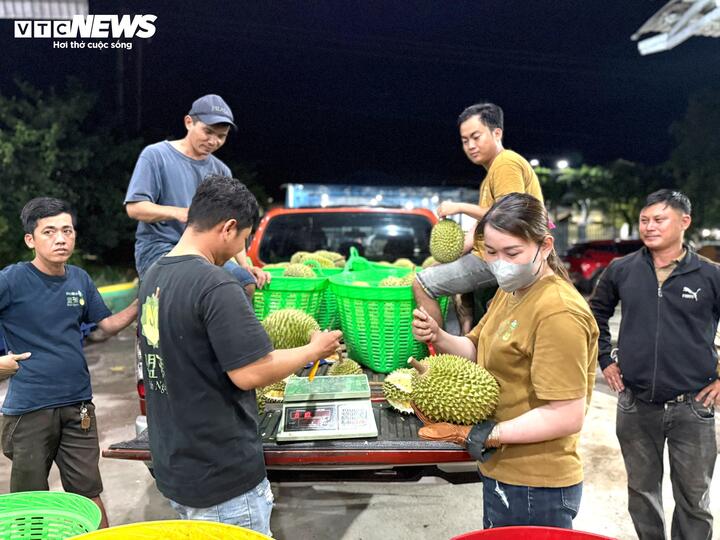
Each durian is meticulously inspected before export.
“Dipped in solution” – this is truly an unfair accusation, not just against farmers but against the entire durian industry. At a seminar, I, along with three other experts, stood up and used our reputation and honor to affirm that these solutions are not harmful and are approved for use. Perhaps more extensive media coverage is needed to clear the name of the farmers,” emphasized expert Nguyen Dang Nghia.
Ironically, while the market demands attractive, evenly ripened, and minimally damaged fruits, farmers are still suspected of using harmful techniques when applying ripening solutions. Caught between commercial quality standards and social prejudices, farmers often find themselves in a bind.
Mr. Nguyen Tuan Khanh, a trader from Cai Lay town, Cai Lay district, shared: “I’ve been in the durian business for over 30 years, and there was a time when I directly exported to China. Just think about it: if the dipping solution was harmful, would they allow it to be imported into their market?” .
“If durians don’t ripen evenly, have unripe segments, or ripen too late, they will be rejected. Dipping in solution is a way to control the ripening process. We don’t ask for anyone’s sympathy; we just want someone to speak the truth. If these rumors continue to spread, who will dare to grow durians in the future?”, added Mr. Khanh.
The King of Fruits Goes Live: Frozen Durian, Export-Ready, Makes its Livestream Debut
For the very first time, Hanoi will be able to enjoy export-quality frozen durian, streamed live! This mouth-watering treat is usually reserved for the US, Australian, and Canadian markets, but now it’s coming to the capital city of Vietnam. Get ready for a taste sensation like no other!
“BIG Set to Smash Year-End Revenue Targets, Thanks to Durian; 5.2% Dividend Payout Imminent”
The Hanoi Stock Exchange (HNX) has announced the record date for the cash dividend of Big Invest Group Joint Stock Company (BIG) listed on UPCoM. As of December 4, 2024, shareholders are entitled to a generous 5.2% dividend yield. The company’s leadership has also revealed impressive revenue growth projections for 2024, largely driven by the China-focused durian import-export business, especially during the pre-Lunar New Year peak season.
Unlocking the Export Potential of Vietnam’s Tropical Fruits: BIG Ventures into Agricultural Business with a Focus on Dollar-Valued Produce
To seize the ever-growing opportunities in the agricultural export market, especially for the “king of fruits” – durian, Big Invest Group JSC (UPCoM: BIG) has swiftly expanded its business into the agricultural produce sector. Along with the establishment of two specialized agricultural produce companies, BIG also forged a strong partnership with a leading durian exporter to China in the Southern region.

